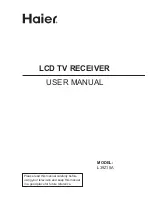
LEA-M8S / LEA-M8T - Hardware integration manual
UBX-15030060 - R06
Product handling
Page 28 of 33
Production information
Intended use
☞
To mitigate any performance degradation of a radio equipment under EMC disturbance, system
integration shall adopt appropriate EMC design practice and shall not contain cables over three
meters on signal and supply ports.
4.4
Applications with cellular modules
GSM terminals transmit power levels up to 2 W (+33 dBm) peak, 3G and LTE up to 250 mW
continuous. Consult the LEA-M8S Data sheet [1] and the NEO-M8T / LEA-M8T Data sheet [2] for the
absolute maximum power input at the GNSS receiver.
☞
See GPS Implementation and Aiding Features in u-blox Wireless Modules [7].
Isolation between GNSS and GSM antenna
In a handheld-type design, an isolation of approximately 20 dB can be reached with careful placement
of the antennas. If such isolation cannot be achieved, for example, in the case of an integrated cellular
/GNSS antenna, an additional input filter is needed on the GNSS side to block the high energy emitted
by the GSM transmitter. Examples of these kinds of filters are SAW Filters from Epcos (B9444 or
B7839) or Murata.
Increasing interference immunity
Interference signals come from in-band and out-band frequency sources.
In-band interference
With in-band interference, the signal frequency is very close to the GNSS constellation frequency
used, for example, GPS frequency of 1575 MHz (see Figure 17). Such interference signals are typically
caused by harmonics from displays, micro-controller, bus systems, and so on.
1525
1550
1625
GPS input filter
characteristics
1575
1600
0
-110
Jammin
g signal
1525
1550
1625
Frequency [MHz]
Power [dBm]
GPS input filter
characteristics
1575
1600
0
Jamming
signal
GPS
signals
GPS Carrier
1575.4 MHz
Figure 17: In-band interference signals
Figure 18: In-band interference sources
Measures against in-band interference include:






































